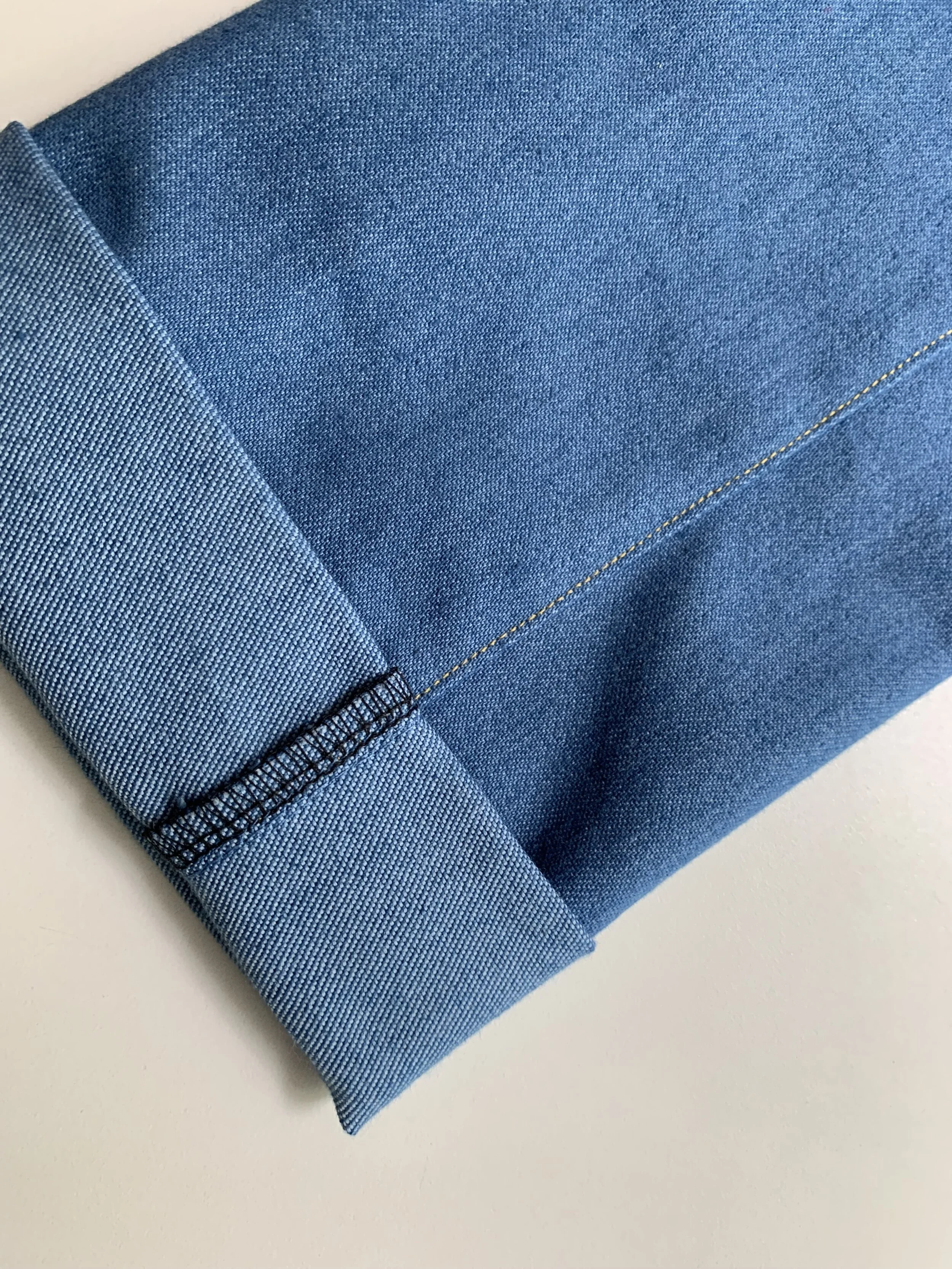Thursday Tip with Hali - How To Sew Flat Felled Seams
Thursday Tip // How To Sew Flat Felled Seams
You can’t beat this look when it comes to classic jeans or a denim jacket! It may seem complicated but fear not. We have simplified it for you and this quick instructional video will have you rolling out flat felled seams like it’s your job.
We know there are several ways to sew a flat felled seam. This is by no means “The Only Way” but we like it because it’s quick and it does the job well. We like to teach this method to our beginners because there is no fussing with the seam allowance widths, you just follow what the pattern gives you. Let’s not overcomplicate things, eh?
Flat felled seams are common on the inseam of jeans, workwear and outerwear because they enclose all raw edges giving them added strength and durability. These seams can also be beneficial to use with lightweight fabrics that fray easily.
A flat felled seam keeps the bulk of the fabric to the OUTSIDE of the garment whereas a faux flat felled seam keeps the bulk INSIDE. A faux flat felled seam is a lot more common in ready to wear garments as of late and for obvious reasons (it’s cheaper and faster to sew). We have included written instructions for sewing a faux flat felled seam below as well; however these steps are not included in the video.
For our flat felled seam method, you can choose to use matching thread or contrasting topstitching thread. If you are using matching thread in both spool and bobbin then you can just head to Step 1 and begin.
For contrasting top-stitching: On a pair of jeans, to flat-fell the inseam you will typically sew the legs wrong sides together and press the seam allowance towards the back leg. The top stitching thread will show up on the front leg piece so you want to make sure you are doing Step 1 with the front leg on top, under your presser foot.
How to sew a flat felled seam:
Place your fabric WRONG sides together. Sew using the seam allowance noted in your pattern but no less than a ½ inch. Press seam allowance to the side you will topstitch.
Cut down the underlying seam allowance with a pair of duckbill/applique scissors at least by half. You can also use regular fabric scissors or a rotary cutter too. Whatever suits your preferred level of risk.
Fold the longer seam allowance under the one you just cut, tucking it underneath, enclosing all raw edges. Press the seam.
Use pins to hold the seam flat or continue tucking the seam allowance under as you sew. It’s your choice! Some fabrics will be easier to keep tucked under by hand and others may fare better with pins to hold the seam down.
Topstitch along the folded edge to secure the seam.
ID: an extreme close up of a flat felled seam on a bright blue denim. The topstitching is gold.
How to sew a faux flat-felled seam:
Place your fabric RIGHT sides together. Sew using the seam allowance noted in your pattern.
Finish the seam with a zigzag stitch or serged edge.
Press the seam allowance to the side you would like to topstitch (for the inseam on jeans, press the seam allowance toward the front leg)
From the right side, topstitch along the edge of the fold to mimic the look of a flat-fell seam.
ID: a close up of a cuffed jean pant leg in a bright blue denim. A faux flat felled seam is shown with black serger thread visible on the rolled up cuff and gold topstitching on the inseam.
Thanks for reading and happy sewing!


